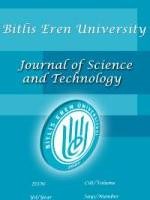Ali Tugcan UNLUER, Huseyin KOCATURK, Zeynep DONER, Mustafa KAYA, Demet Kıran YILDIRIM, Mustafa KUMRAL, Şenel ÖZDAMAR
Geyikli (Çanakkale, Turkey) Heavy Mineral Sands: Insights to Their Origin Related with Alkaline Intrusive Rocks
Geyikli (Çanakkale, Turkey) Heavy Mineral Sands: Insights to Their Origin Related with Alkaline Intrusive Rocks
Essexites of Kestanbol pluton have significant amount of iron (Fe), titanium (Ti), Rare Earth Elements (REE) and thorium (Th) and considered as the source of Geyikli Heavy Mineral Sands (HMS). Geyikli HMS were enriched by the minerals of magnetite, rutile, monazite and apatite. In Geyikli HMS, REE contents (up to 0,25%) were rised by 4-5 times during placer deposition, mainly caused by the enriching of weathering resistant REE bearing dense phosphate minerals and zircon. On the other hand, Fe (up to 11%) and Ti (up to 2,5%) enrichments are heavily dependent on the magnetite, titanomagnetite and rutile minerals. By using the basic physical mineral processing techniques such sieving, shaking tables, multi gravity seperators, magnetic seperation, it is possible to reach higher grades for both REE and Fe-Ti and to have better initial values for electrochemical mineral processing techniques.
Keywords:
Rare Earth Elements (REE), Essexite, Placer, Heavy Mineral Sand,
___
- Altunkaynak, Ş., Dilek, Y., Genç, C. Ş., Sunal, G., Gertisser, R., Furnes, H., and Yang, J., 2012. Spatial, temporal and geochemical evolution of Oligo–Miocene granitoid magmatism in western Anatolia, Turkey. Gondwana Research, 21(4), 961-986.
- Andaç, M., Biga Yarimadasinda Ezine Siyenit Masifi ile Civarindaki Kayaçlarin Petrografisi Ve Bu Kayaçlardan Meydana Gelen Radyoaktif Sahil Plaser Maden Yataginin Etüdü, 1973 Doçentlik tezi (Istanbul, Turkey 97s: Istanbul Technical University).
- Karacık, Z., and Yılmaz, Y., 1998. Geology of the ignimbrites and the associated volcano–plutonic complex of the Ezine area, northwestern Anatolia. Journal of Volcanology and Geothermal Research, 85(1-4), 251-264.
- Kogarko, L., 2018. Chemical composition and petrogenetic implications of apatite in the Khibiny apatite-nepheline deposits (Kola Peninsula). Minerals, 8(11), 532.
- Mugan, P. A., and İpekoğlu, B., 1995. Akçakoca-Kefken (KB Türkiye) arasında yer alan sahil kumlarının ağır mineral içerikleri. Bilimsel Madencilik Dergisi, 34(2), 27-38.
- Mücke, A., and Andaç, M., 1975. Die Paragenese der Schwermineralseifen Südlich von Troja (Westtürkei). Maden Tetkik ve Arama Dergisi, 85(85).
- Örgün, Y., Altınsoy, N., Şahin, S. Y., Güngör, Y., Gültekin, A. H., Karahan, G., and Karacık, Z., 2007. Natural and anthropogenic radionuclides in rocks and beach sands from Ezine region (Çanakkale), Western Anatolia, Turkey. Applied Radiation and Isotopes, 65(6), 739-747.
- Pearce, J. A., Harris, N. B., and Tindle, A. G., 1984. Trace element discrimination diagrams for the tectonic interpretation of granitic rocks. Journal of petrology, 25(4), 956-983.
- Sun, S. S., and McDonough, W. F., 1989. Chemical and isotopic systematics of oceanic basalts: implications for mantle composition and processes. Geological Society, London, Special Publications, 42(1), 313-345.
- Whalen, J. B., Currie, K. L., and Chappell, B. W., 1987. A-type granites: geochemical characteristics, discrimination and petrogenesis. Contributions to mineralogy and petrology, 95(4), 407-419.
- Yayın Aralığı: Yılda 2 Sayı
- Başlangıç: 2011
- Yayıncı: Bitlis Eren Üniversitesi
